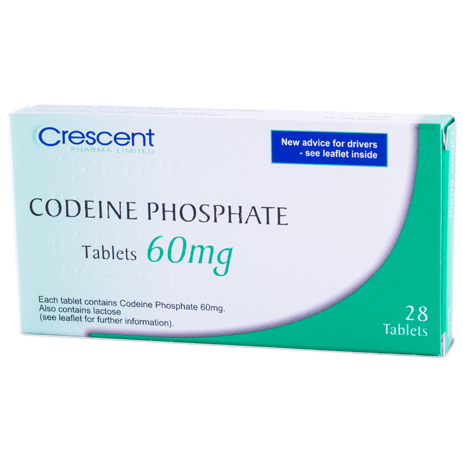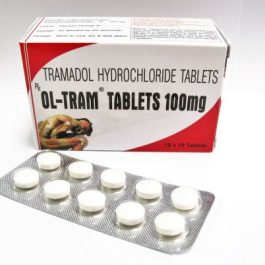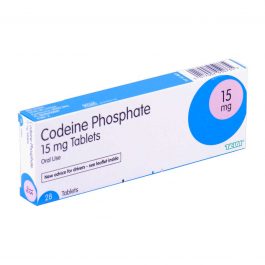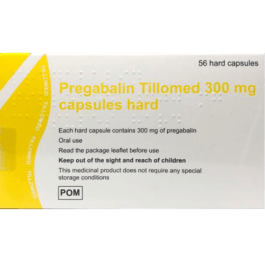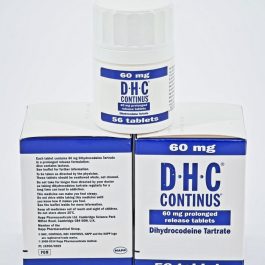Buy Codeine Phosphate
What is Codeine Phosphate?
Codeine comes under the opioid analgesics. Codeine Phosphate was first isolated in 1832. Codeine Phosphate is utilised as a central analgesic, sedative, hypnotic, antinociceptive, and antiperistatical agent, and is also as a cough suppressant. Codeine Phosphate is indicated in adults and children older than 12 years of age. Codeine Phosphate is used for mild to moderate pain. It is also used, usually in combination with other medications to treat headaches, muscular pain, painful menstruation migraines, and toothache, to reduce coughing. Codeine Phosphate can be used as an alternative drug to less potent painkillers, such as aspirin, ibuprofen, which have not worked. Codeine Phosphate is also commonly marketed in products containing Codeine Phosphate with other pain killers or muscle relaxers. Codeine Phosphate is the generic term for medicines sold under the brand names Codeine Phosphate Tablets in the UK, Codeine Phosphate in the US, Canada (manufactured by Ranbaxy (UK) a Sun Pharmaceutical Company, Accord-UK Ltd, Laboratoire Riva Inc). Codeine Phosphate can be bought from online sites that assure you an overnight delivery.
Codeine Phosphate is available in many countries in the European Union like Bulgaria, Cyprus, Denmark, Estonia, France, Ireland, Latvia, Lithuania, Malta, Poland, Romania, as an over the counter drug.
In UK Codeine Phosphate alone is not available as over the counter. It is only available in combination with paracetamol, aspirin, or ibuprofen, and only at its lowest dose but one would need a prescription to buy the drug of higher doses. The drug usually contains a mixture of Codeine Phosphate (8mg) and paracetamol (500mg) is available over the counter. Countries like Australia, the US, Japan, and the United Arab Emirates banned the sale of medicines containing Codeine Phosphate as over-the-counter (OTC) medicines.
Codeine Phosphate is available online with a prescription. You can buy Codeine Phosphate in the US, UK, Canada, and India with an online prescription.
Codeine Phosphate comes as a tablet, capsule, and oral suspension. Codeine Phosphate tablets and capsules are mostly available in different strengths such as 8mg, 10mg 15mg, 30mg, 60mg, and even 120mg.
Codeine Phosphate is not indicated in some people who are having certain medical conditions. Inform your doctor before starting the medicine if you have lung problems or breathing difficulties, head injury raised intracranial pressure, adrenal gland problems, a condition that causes fits or seizures, drinking more than the maximum recommended amount of alcohol (14 units a week), pregnant or is breastfeeding or those planning for pregnancy, liver problems, are under 18 years old and have had your tonsils or adenoids removed because of a sleep problem called obstructive sleep apnoea.
Drug interactions affect how the medications would work. It may increase your risk and worsen side effects in more serious condition. Keep a list of all the products you use (including prescription/nonprescription drugs and herbal products) and share it with your doctor and pharmacist. Do not start, stop, or change the dosage of any medicines without your doctor’s approval.
Codeine Phosphate interacts with Medicines used to thin the blood such as warfarin may increase the risk of bleeding. Chloramphenicol and ciprofloxacin are antibiotics used for infections and its interaction with opioids reduce the plasma concentration of the antibiotic, Ritonavir may increase plasma levels of opioid analgesics such as Codeine Phosphate Mexiletine interacts and cause delayed absorption of mexiletine, Metoclopramide or domperidone, Cholestyramine – for lowering blood cholesterol levels, oral contraceptive pill, Increases CNS depression with CNS depressants (eg. Anxiolytics, Hypnotics, Antipsychotics). Codeine Phosphate makes you feel sleepy or dizzy which may cause a lack of concentration in activities such as driving and machinery works.
Codeine Phosphate tablets may affect once thinking and reasoning efficiency. Dizziness, spinning sensations, muscle rigidity, visual disturbances, drowsiness, confusion, fainting, or hallucinations are some of the effects that you may experience. Do not drive or operate machinery if affected.
The most common side effects of Codeine Phosphate include constipation, feeling dizzy, drowsiness, constipation, nausea, vomiting, and stomach pain.
Codeine Phosphate is known to cause an undesirable effect on regular prolonged use of Codeine Phosphate such as addiction and tolerance. Prolonged use of a painkiller for headaches can make them worse so it is better to take a doctor’s advice rather than self-medicate. Some people feel that they cannot reduce the dose because they need it to control their headaches which should be noted as this headache are often due to the drug wearing off and are actually a sign of withdrawal and dependence rather than of the original headache. Prolonged use of opioids could change the way your brain processes pain, making you more sensitive to pain. This is called opioid-induced hyperalgesia. A study published concludes Codeine Phosphate given post-operatively in children after tonsillectomy and/or adenoidectomy for obstructive sleep apnoea, led to rare, but life-threatening adverse events including death.
Codeine Phosphate Tablets contain lactose. Patients with rare hereditary problems of galactose intolerance, total lactase deficiency, or glucose-galactose malabsorption should not take this medicine.
Sudden cessation of treatment with Codeine Phosphate or reduction of its dose cause withdrawal symptoms such as feeling restless, agitated, anxious or nervous, panic attacks, difficulty sleeping, shaking, and ringing in your ears. This might happen on sudden cessation of therapy or dose reduction. When a patient needs to stop the therapy, it is advisable to taper the dose as per the physician’s advice.
The possibility of Codeine Phosphate overdose can occur due to the drug dependence that would develop in patients who are not following the doctor’s instructions. It is important to recognize the signs and symptoms of a possible Codeine Phosphate overdose. Overdose of Codeine Phosphate can cause central nervous system depression, including respiratory depression, extreme somnolence progressing to stupor or coma, skeletal muscle flaccidity, cold and clammy skin.
The triad of coma, pinpoint pupils and respiratory depression is considered indicative of opioid overdosage with dilation of the pupils occurring as hypoxia develops. Nausea and vomiting are common. Other opioid overdose symptoms include hypothermia, confusion, convulsions, severe dizziness, severe drowsiness, hypotension and tachycardia (possible but unlikely), nervousness or restlessness, excitement, hallucinations, bradycardia, hypotension, circulatory failure, slow or troubled breathing, severe weakness, convulsions, especially in infants and children. In severe overdose with Codeine Phosphate, apnoea, circulatory collapse, cardiac arrest and even death may occur. If you see someone who has been overdosed with Codeine Phosphate, within the first hour of intake activated charcoal should be given, naloxone (which is an antagonist medicine that works against and normalizes the adverse action of Codeine Phosphate) should be administered if respiratory depression is evident.
Codeine Phosphate 30 mg tablets are white to off-white round biconvex tablets. It contains Codeine Phosphate as an active ingredient and lactose monohydrate, starch, pregelatinized, magnesium stearate, sodium starch glycolate as an inactive ingredient.
Codeine Phosphate is well absorbed after oral intake and is widely distributed. About three fourth of the drug is excreted in the urine in 24 hours. Codeine Phosphate is metabolized in the liver and is excreted in the urine, largely in inactive forms. A small fraction (approximately 10%) of administered Codeine Phosphate is demethylated to form morphine; traces of free morphine can be found in the urine after therapeutic doses of Codeine Phosphate.
It is generally taken by mouth. Codeine Phosphate shows its notable effect after half an hour of its intake, with maximum effect at two hours and its effects last for about four to six hours.
Keep all medicines out of the reach and sight of children. Store in a cool, dry place, away from direct heat and light.
How does Codeine work?
Codeine Phosphate is a pain killer and cough suppressant similar to morphine and hydrocodone. The oral bioavailability of Codeine Phosphate is 50%. About 10% is metabolized to morphine and the rest is metabolized to inactive compounds. The small amount of Codeine Phosphate that is converted to morphine in the body mimics the body’s natural painkillers, endorphins. They control pain by blocking pain messages to the brain. Like morphine, Codeine Phosphate produces their actions at a cellular level by activating opioid receptors (receptors in the central nervous system and brain that reduce pain).
These receptors are distributed throughout the central nervous system (CNS) Codeine Phosphate binds to receptors in the brain (opioid receptors) that are important for transmitting the sensation of pain throughout the body and brain. Codeine Phosphate increases tolerance to pain. Although it reduces pain, Codeine Phosphate also causes sedation, drowsiness, and depressed breathing. Codeine Phosphate frequently is combined with paracetamol for more effective pain relief.
Benefits of Codeine Phosphate
Codeine Phosphate has analgesic, antitussive, antinociceptive, antiperistaltic properties. Codeine Phosphate is commonly used to provide postoperative pain relief in children. Various studies showed Codeine Phosphate as the drug of choice after the extraction of a patient’s impacted lower third molar as it is more effective for pain, edema, and trismus in comparison with NSAID like diclofenac potassium.
Codeine Phosphate is still used for postoperative pain relief after neurosurgical procedures, although morphine is more potent. This is because Codeine Phosphate causes less sedation and respiratory depression (ineffective slow breathing) than morphine. Codeine Phosphate has no dietary restrictions and is rapidly absorbed from the intestine. Codeine Phosphate 60mg has the same pain-relieving effect as 600mg aspirin. Codeine Phosphate 100mg has equivalent pain reliving effect of10mg morphine. It is safe to take Codeine Phosphate with other NSAIDS like ibuprofen or naproxen without consulting a doctor, in patients who take Aspirin daily to lower the risk of heart attack, clot-related strokes, and other blood flow problems in patients who have cardiovascular disease or heart attack or stroke. Codeine Phosphate is one of the choices of drugs that is placed at the second step of the WHO analgesic ladder (three-step ladder for cancer pain relief in adults) as a ‘weak’ opioid. Codeine Phosphate is used to relieve pain in cancer patients.
How to take it?
Before starting the treatment with opioids, a thorough discussion should be held with the physician to avoid the risk of addiction and drug withdrawal syndrome.
Codeine Phosphate comes as a tablet, capsule, and an oral suspension form to be taken by mouth.
Swallow the tablet or capsule with a full glass of water (8 ounces or 240 milliliters). You should not lie down for at least 10 minutes after taking Codeine Phosphate. If you have a vomiting sensation it’s advised to take Codeine Phosphate with food. It has to be taken as recommended by the physician usually one tablet of dose Codeine Phosphate 30mg. You can take Codeine Phosphate either before or after food, but taking the drug after food can help prevent feelings of dizziness/discomfort which can occur with the first few doses
Do not take for more than 3 days without consulting your doctor. For adults one to two tablets every four hours as required. Maximum of eight tablets daily. For children aged less than 12 years, it is advised that Codeine Phosphate should not be used because of the risk of opioid toxicity due to the variable and unpredictable metabolism of Codeine Phosphate to morphine. For Paediatric patients who are aged between 12 and 15 years, it is advised to take one tablet every six hours as required, up to a maximum of four tablets daily in any 24-hour period. For adult patients and children who are aged between 15 and 18 need to take one tablet every four to six hours as required, up to a maximum of eight tablets in any 24-hour period. For elderly patients, the dose should not be repeated more frequently than every 4 hours and the doses should be taken as per the instructions of the physician.
In adults the usual dose of Codeine Phosphate oral suspension one or two 5ml spoonfuls (25-50mg Codeine Phosphate) four times 6 hours interval. The maximum daily dose of Codeine Phosphate should not exceed 240 mg. For children aged between 12 and 18 years dose is worked out based on weight (0.5-1mg/kg). The recommended Codeine Phosphate dose for children 12 years and older should be one or two 5ml spoonfuls (25-50mg Codeine Phosphate) every 6 hours when necessary up to a maximum dose of Codeine Phosphate of 240 mg daily.
While buying Codeine Phosphate oral suspension the manufacture will provide a medicine spoon to help you measure the correct amount. Ask a pharmacist for one if you do not have it.
Do not use a kitchen teaspoon to measure the liquid because it will not give the correct amount.
The duration of treatment with Codeine Phosphate should not be extended beyond three days and if no effective pain relief is achieved then patients should take necessary advice from their physician.
If you missed a dose of Codeine Phosphate take the missed dose as soon as you remember it. However, if it is almost time for the next dose, skip the missed dose and continue the regular dosing schedule. Do not take a double dose to make up for a missed one.

